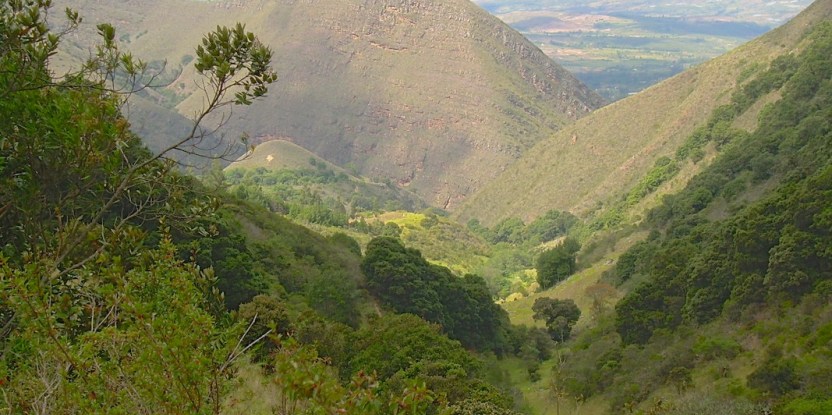BOGOR, Indonesia—Oil palm, billed as a way to improve local economic opportunity and reduce poverty in the tropics, may not live up to that billing, a recent report shows.
In fact, a case study from the Center for International Forestry Research (CIFOR) on the effects of oil palm on economy, ecology and society in West Papua paints a stark picture.
On the front lines of oil palm expansion, the indigenous forest-dwelling Arfak people of West Papua Province of Indonesia believe they are not the beneficiaries of the palm’s promise—rather, the real winners seem to be skilled non-Papuan immigrants and other Papuan peoples who hold most of the jobs available at oil palm plantations.
“It is unlikely that oil palm will help the rural poor, because they simply don’t have the skills and the knowledge to effectively engage in oil palm production,” said Krystof Obidzinski, a senior scientist at CIFOR and a co-author of the study.
Oil palm produces close to 40 percent of the global vegetable oil supply. Between 1976 and 2009, global per capita consumption of palm oil more than doubled from 11 kilograms to 25 kilograms; palm oil is now virtually ubiquitous, found in foods, cosmetics, soaps and pharmaceuticals.
In the next five years, Indonesia’s oil palm expansion projects will grow rapidly to meet industrial demand. The country plans to increase oil palm production to 40 million metric tons, which will amount to double the 2010 production and will require an additional 12 million hectares of land. Much of this land will be developed in Papua, where 5.7 million hectares of forest land have been deemed suitable for oil palm.
A CLOSER LOOK
To observe how this rapid expansion might affect communities in Indonesia, Obidzinski and a team of researchers conducted their study in the Prafi Plains in West Papua, where a 15,000-hectare oil palm development project began in 2005.
Farming palm oil is challenging—cultivation, harvesting, transporting and marketing palm oil products can be costly, especially when harvesting costs increase as the palms age. The Arfak have no training on how to maintain the palms, eradicate pests or prune and cut fruit bunches, so jobs tend to be given to immigrant workers from other parts of Indonesia.
Generally, workers hired by palm oil companies had increased incomes and a more reliable source of income, which enable them to improve their quality of life, according to the study.
We need development to be slower to allow the time for local people to adjust, to learn so that they can take advantage of oil palm
The Arfak, on the other hand, lost access to the land that they traditionally used. As land became more commercially valued, migrants began to take control of it, while promised infrastructural improvements failed to arrive, according to Heru Komarudin, a CIFOR researcher and a co-author of the study.
The Arfak have rules about how forests can be used, and the report indicates that the Arfak people are not only highly dependent on the forest, but that it is inextricably linked with their sense of self. “Communities consider the forest their mother, who always provides food for her children,” the researchers write.
Oil palm has drastically changed this environment.
Since the opening of the oil palm estate in the Prafi Plains, local people claimed that seasonal farming land has become limited; clean water is scarcer during the dry season; there is increased erosion and flooding in the region; air pollution has increased due to land-clearing fires; and there is higher incidence of disease, according to the study.
“This is way too much, way too soon,” Obidzinski said. “We need development to be slower to allow the time for local people to adjust, to learn so that they can take advantage of oil palm.”
SLOWING IT DOWN
The research team found that oil palm farming has improved the quality of life for many stakeholders in the industry, but indicated that further expansion needs to be transparent and take into account the needs of local communities.
Oil palm is fine, but it has to be scaled down
If oil palm expansion schemes are seen as a way to further alleviate poverty and create economic opportunity, land also needs to be set aside for Arfak communities to continue their lives.
To prevent further deforestation and land degradation, development efforts should focus on regenerating old plantations and introducing higher yielding varieties. Obidzinski says that these measures could serve to protect local communities in West Papua while boosting production.
“Oil palm is fine, but it has to be scaled down, it has to be implemented in a more gradual approach rather than a large-scale big investment in a short period of time.”
For information about the topics of this research, please contact Heru Komarudin at h.komarudin@cgiar.org or Krystof Obidzinski at k.obidzinski@cgiar.org.
CIFOR’s research on oil palm landscapes forms part of the CGIAR Research Program on Forests, Trees and Agroforestry
We want you to share Forests News content, which is licensed under Creative Commons Attribution-NonCommercial-ShareAlike 4.0 International (CC BY-NC-SA 4.0). This means you are free to redistribute our material for non-commercial purposes. All we ask is that you give Forests News appropriate credit and link to the original Forests News content, indicate if changes were made, and distribute your contributions under the same Creative Commons license. You must notify Forests News if you repost, reprint or reuse our materials by contacting forestsnews@cifor-icraf.org.


